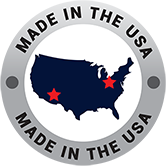B Type Thermocouple
Thermocouples rely on the Seebeck effect, initially identified by Thomas Johann Seebeck in 1821. This phenomenon entails the generation of an electromotive force (EMF) or voltage across two junctions where dissimilar metals meet, creating a voltage differential due to a temperature disparity. Typically, a thermocouple is constructed by joining two distinct metal wires at one end to establish the measurement junction, while their other ends are commonly connected to a measuring instrument or controller. The selection of metals is tailored to the targeted temperature range for the thermocouple’s application, resulting in diverse types of thermocouples, each showcasing unique temperature characteristics. When the temperature at the measurement junction (hot junction) diverges from that at the opposite end (cold junction or reference junction), a voltage arises along the thermocouple wires. This voltage’s magnitude is directly proportional to the temperature difference between the hot and cold junctions. The resulting voltage, typically within the millivolt range, is then measured using instruments like a voltmeter. The conversion of this voltage output into temperature involves the utilization of standard reference tables or mathematical equations, establishing the relationship between voltage and temperature specific to the type of thermocouple in use.
A Type B thermocouple is one of the several types of thermocouples used for measuring temperature. A thermocouple is a temperature sensor that generates a voltage proportional to the temperature difference between its two ends. Type B thermocouples are specifically designed for high-temperature applications.
The Type B thermocouple is made from a combination of platinum-rhodium alloys. The positive leg (or wire) is made of platinum (Pt), while the negative leg contains a platinum-rhodium alloy (usually PtRh30% and PtRh6%). The Type B thermocouple has a temperature range of 0 to 1800 degrees Celsius (32 to 3272 degrees Fahrenheit), making it suitable for high-temperature industrial processes.
These thermocouples are commonly used in industries such as metalworking, ceramics, and other applications where high-temperature measurements are required. Keep in mind that, due to their specific characteristics and limited temperature range, Type B thermocouples might not be the most suitable choice for all temperature measurement applications, and selection should be based on the specific requirements of the process or system in question.
Cleveland Electric Laboratories: B Type Thermocouple
Cleveland Electric Labs (CEL) holds a crucial role across various industries, underscoring its significance in the domain of electrical engineering and technology. Recognized for its inventive contributions, CEL has been a key driver in advancing diagnostics, protection, and monitoring within power systems. The company’s advanced products and services have played a pivotal role in enhancing the efficiency, reliability, and safety of electrical systems across a wide range of applications. CEL stands out for its steadfast commitment to research and development, establishing itself as an industry frontrunner with a reputation for delivering high-quality solutions that cater to the ever-changing demands of its clients. Beyond its technical prowess, CEL is actively contributing to the promotion of sustainability and resilience in electrical infrastructure. With an unwavering dedication to excellence, Cleveland Electric Labs has become an indispensable partner for organizations seeking cutting-edge electrical solutions and technological advancements.



